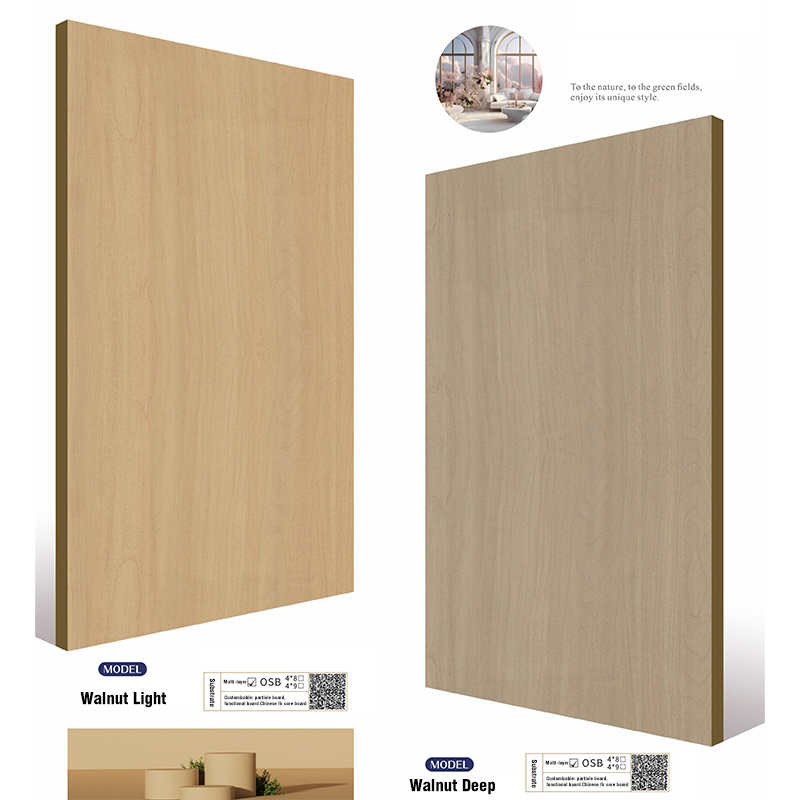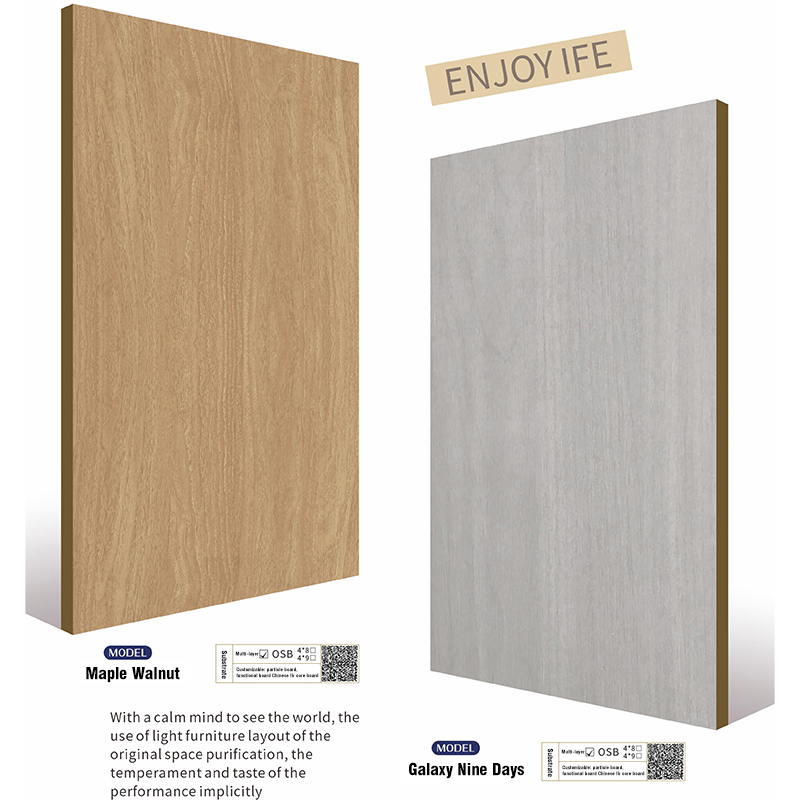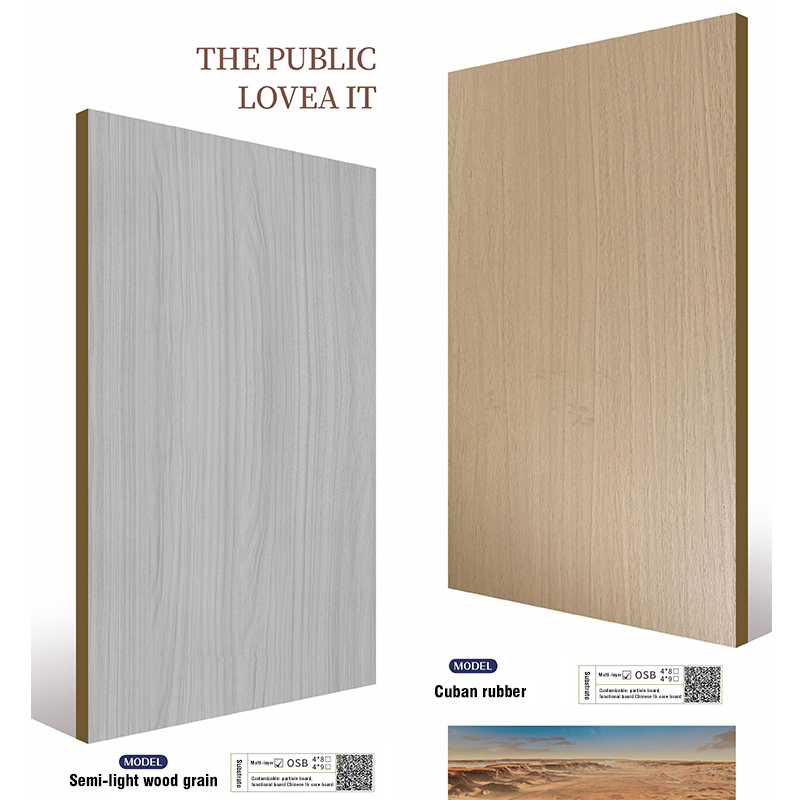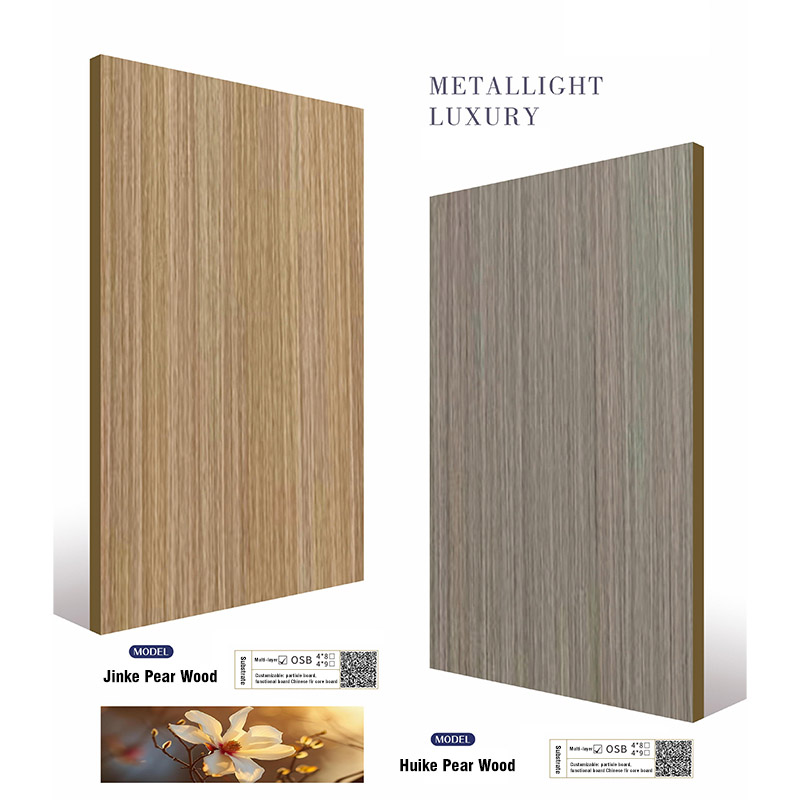What surface treatment factors affect the coating adhesion of walnut board base material?
Release Time : 2025-10-10
The paint adhesion of walnut board base material is significantly affected by surface preparation factors, focusing on base material cleanliness, moisture content control, surface roughness adjustment, oil and resin removal, application of a sealer primer, optimized sanding process, and the compatibility of the primer and topcoat. These factors collectively determine the bond strength between the coating and the base material, directly impacting the quality and durability of the coating.
Cleanliness of the base material is fundamental to improving adhesion. Walnut board is susceptible to contamination with dust, sawdust, and glue during processing and transportation. If not thoroughly removed, the interface between the coating and the base material will be physically isolated, resulting in reduced adhesion. For example, residual glue marks or surface wear debris at mortise and tenon joints can hinder paint penetration and cause localized coating defects. Therefore, before painting, the base material surface must be cleaned of impurities by wiping, sanding, or solvent cleaning.
Moisture content control is crucial. If the moisture content of walnut board is too high, water evaporation during the coating drying process can cause blistering and whitening of the coating, and even cracking due to wood shrinkage. Generally, the moisture content of walnut board base material for interior use should be controlled between 5% and 10%, and below 9% for flooring. If the moisture content exceeds this limit, it should be reduced to a reasonable range through drying to prevent moisture release after painting, which can damage adhesion.
Surface roughness enhances adhesion through mechanical action. Proper sanding of walnut board surfaces increases the contact area between the coating and the base material, creating a mechanical bond. Sandpaper should be selected to match the hardness of the wood. Too coarse sandpaper can easily scratch the wood grain, while too fine sandpaper will not improve the roughness. For example, high-density walnut can be sanded with 240-grit sandpaper in the direction of the fiber. This not only preserves the natural grain but also creates a microscopic uneven structure, promoting paint penetration.
Removing oil and resin is key to preventing paint defects. Walnut may secrete resin or pick up industrial oils, which can hinder the chemical bonding of the paint to the base material. Solvent dissolution (such as a mixture of acetone and hot water) or alkaline cleaning (sodium carbonate solution) can effectively remove resin. For stubborn oil stains, a combination of mechanical scraping and chemical cleaning is required to ensure that no active substances remain on the surface of the walnut board base material.
The application of a sealer primer can prevent the leakage of substances from the walnut board base material. Resins deep within walnut wood may leak out when exposed to temperature and humidity fluctuations, contaminating the topcoat or reducing adhesion. A sealer primer (such as shellac or acrylic primer) forms a dense barrier to prevent resin migration. For example, spraying a sealer primer before applying the topcoat on a high-density walnut board base material can significantly improve coating stability.
Optimizing the sanding process requires a balance between smoothness and wood grain preservation. Excessive pressure or improper sanding belt selection when sanding walnut boards can damage the natural grain and affect the decorative effect. Insufficient sanding can leave burrs on the surface and cause pinholes in the coating. A multi-pass sanding process, starting with a coarse sanding belt to remove large imperfections and then fine-finishing with fine sandpaper, can achieve a balance between a smooth surface and defined texture.
The compatibility of the primer and topcoat directly impacts intercoat adhesion. If the primer and topcoat are chemically incompatible, such as applying a polyester paint over a shellac primer, insufficient intercoat crosslinking can lead to peeling. Therefore, it's important to choose similar or complementary coating systems, such as a polyurethane primer with a polyurethane topcoat, and apply them using a wet-on-wet process to ensure sufficient molecular bonding between the layers and enhance overall adhesion.
Improving the coating adhesion of walnut board base material requires comprehensive control of the entire surface preparation process. By synergistically optimizing cleaning, drying, roughening, decontamination, sealing, sanding, and coating compatibility, a durable and stable bond between the coating and the walnut board base material can be achieved, meeting high-quality coating requirements.







